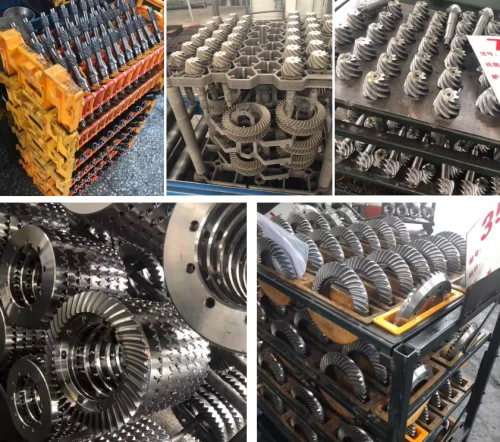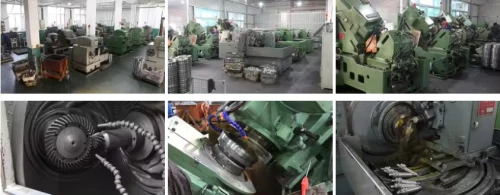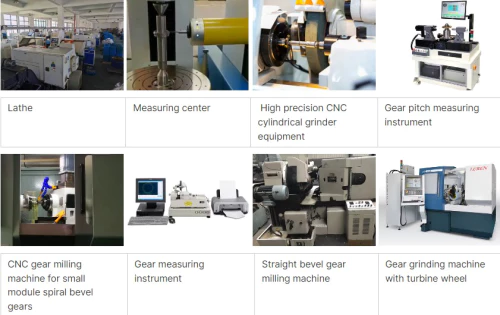Forging bevel gear surface inspection equipment
Forging bevel gears are a type of bevel gears that are manufactured through the forging process. Forging involves shaping metal through the application of localized compressive forces, typically using a die or hammer. In the case of bevel gears, the forging process is used to form the gear teeth and create the desired gear geometry.
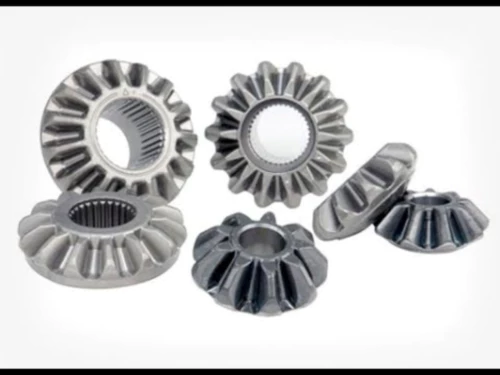
Advantages of Forging Bevel Gears
- High Strength: Forging bevel gears exhibit high strength due to the grain structure alignment that occurs during the forging process.
- Improved Fatigue Resistance: The uniform grain structure in forging bevel gears enhances their resistance to fatigue failure.
- Precise Gear Tooth Geometry: The forging process allows for precise control over the gear tooth geometry, resulting in improved gear performance.
- Cost-Effectiveness: Forging bevel gears offer cost-effectiveness in terms of production, as the process reduces material waste and allows for high-volume production.
- Versatility in Material Selection: The forging process enables the use of various materials, including carbon steels, alloy steels, and stainless steels, for forging bevel gears.
- Enhanced Structural Integrity: The forging process enhances the structural integrity of bevel gears, making them more reliable and durable.
- Tailored Mechanical Properties: Through controlled heat treatment, forging bevel gears can be tailored to have specific mechanical properties, such as hardness and toughness.
- Reduced Lead Time: The forging process allows for the production of bevel gears with shorter lead times compared to other manufacturing methods.
- Environmental Sustainability: Forging bevel gears are considered environmentally friendly due to the reduction in material waste and energy consumption during the manufacturing process.
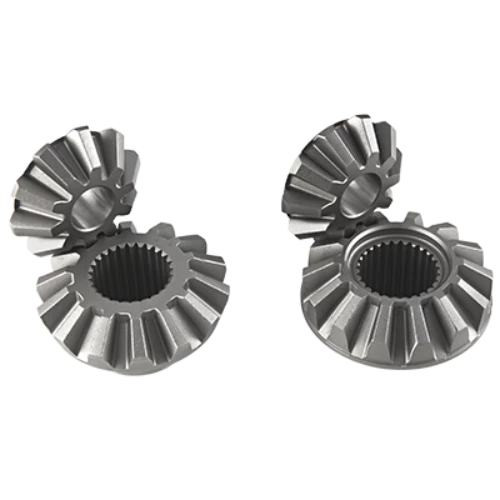
Working Principle of Forging Bevel Gears
Forging bevel gears operate based on the fundamental principles of gear mechanisms. They consist of two intersecting shafts, each with a conically shaped gear (bevel gear) mounted on it. The teeth of the bevel gears are designed to have a specific tooth profile, such as straight, spiral, or hypoid, depending on the application requirements.
When the input shaft rotates, the engagement of the teeth of the bevel gears causes a transfer of rotational motion and torque to the output shaft. The contact between the mating teeth ensures power transmission while maintaining proper alignment and smooth operation.
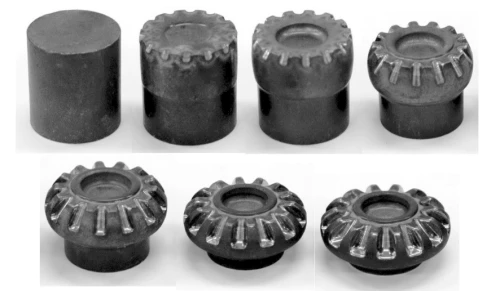
Applications of Forging Bevel Gears
- Automotive Industry: Forging bevel gears are commonly used in automotive applications, such as in differentials and transmission systems.
- Industrial Machinery: They find application in various industrial machinery, including heavy-duty equipment and machinery used in manufacturing processes.
- Aerospace and Defense: Forging bevel gears are utilized in aerospace and defense applications, such as aircraft landing gear systems.
- Renewable Energy: They are used in wind turbines and other renewable energy systems to transfer power efficiently.
- Marine and Shipbuilding: Forging bevel gears play a crucial role in marine propulsion systems and shipbuilding applications.
- Agricultural Machinery: They are found in agricultural machinery, such as tractors and harvesting equipment, to transmit power effectively.
- Power Generation: Forging bevel gears are used in power generation equipment, including generators and turbines.
- Robotics and Automation: They are essential components in robotics and automation systems for precise motion control.
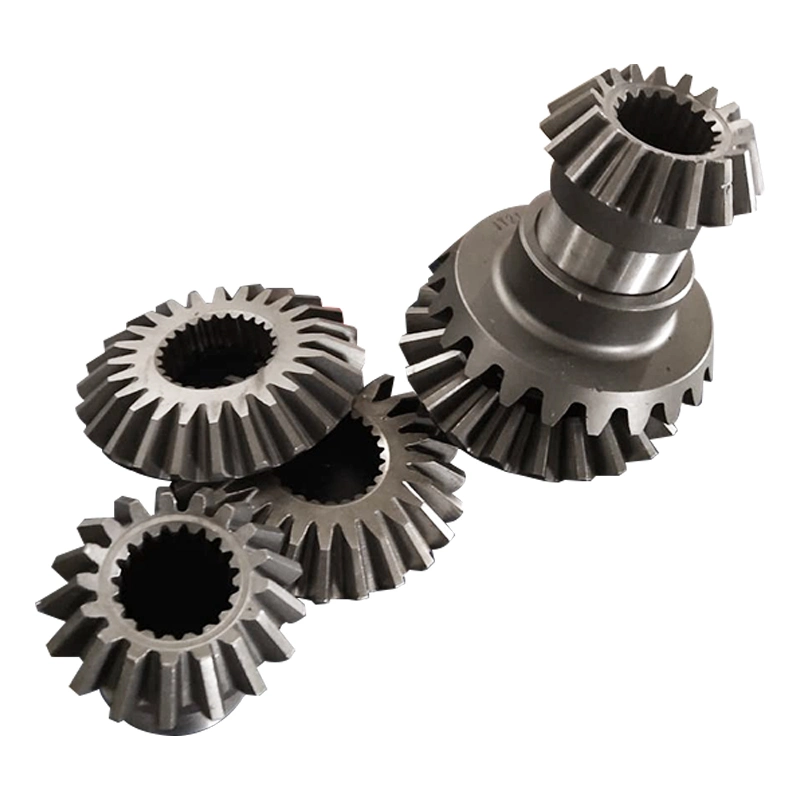
Installation and Maintenance of Forging Bevel Gears
Installation:
- Proper Alignment: The bevel gears should be aligned accurately to ensure smooth operation and avoid premature wear.
- Lubrication: Adequate lubrication should be provided to reduce friction and prevent gear damage.
- Mounting Bolts: Secure mounting bolts are essential to ensure the gears remain in place during operation.
- Inspection: Thorough inspection should be conducted to check for any defects or misalignments before installation.
Maintenance:
- Lubrication: Regular lubrication is necessary to maintain the performance and longevity of the bevel gears.
- Cleaning: Proper cleaning of the gears helps remove contaminants that can affect their operation.
- Inspection: Regular inspection is important to identify any signs of wear, damage, or misalignment.
- Replacements: Any worn or damaged gears should be promptly replaced to avoid further complications.
- Gearbox Maintenance: The overall gearbox should be maintained to ensure the proper functioning of the bevel gears.
- Load Monitoring: Monitoring the load on the gears can help prevent overloading and potential failures.
- Training and Expertise: Adequate training and expertise should be provided to maintenance personnel for proper gear maintenance.
- Record-Keeping: Maintaining records of maintenance activities can help track the history and performance of the bevel gears.
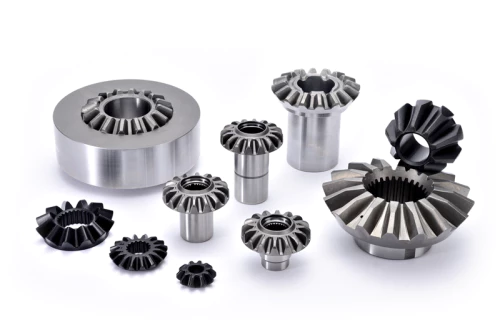
Selecting the Right Forging Bevel Gear
- Application Requirements: Consider the specific requirements of the application, such as torque, speed, and operating conditions.
- Design and Specifications: Evaluate the design and specifications of the bevel gear to ensure compatibility with the system.
- Material Selection: Choose the appropriate material based on factors like strength, durability, and corrosion resistance.
- Quality and Reliability: Opt for bevel gears from reputable manufacturers that adhere to strict quality standards.
- Load-Carrying Capacity: Determine the gear's load-carrying capacity to ensure it can handle the required loads without failure.
- Efficiency and Performance: Consider the gear's efficiency and performance characteristics for optimal system operation.
- Customization and Adaptability: Check if the bevel gear can be customized or adapted to meet specific application requirements.
- Cost Considerations: Assess the overall cost-effectiveness of the bevel gear, considering factors like initial cost, maintenance, and longevity.
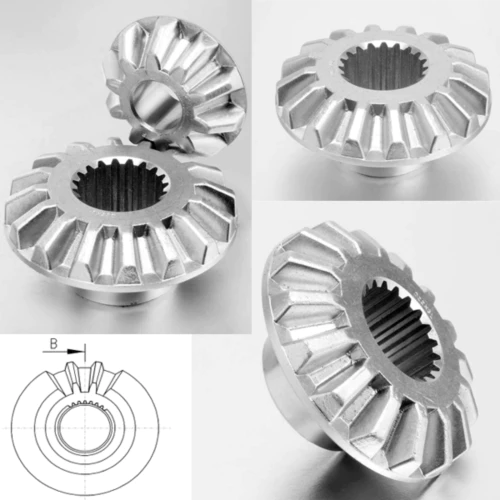
Introduction to Shaoxing Chaoli
Shaoxing Chaoli is a professional manufacturer of gears in China. We export our products to different countries such as Spain, the Netherlands, the United States, South Korea, Turkey, and Russia. We are dedicated to helping customers develop new products and solving technical and quality problems. Our commitment is to meet the needs of users with high-quality products, fair prices, and perfect services.
In short, we adhere to the principles of quality first, timely delivery, and credit first. We treat every business partner sincerely and wholeheartedly welcome friends from the business community to cooperate with us to develop together and create brilliance. In addition to forging bevel gears, Shaoxing Chaoli also offers a range of other gear products, including worm gears, spiral bevel gears, helical gears, spur gears, plastic gears, and metric gear racks. Customized products are available upon inquiry.
